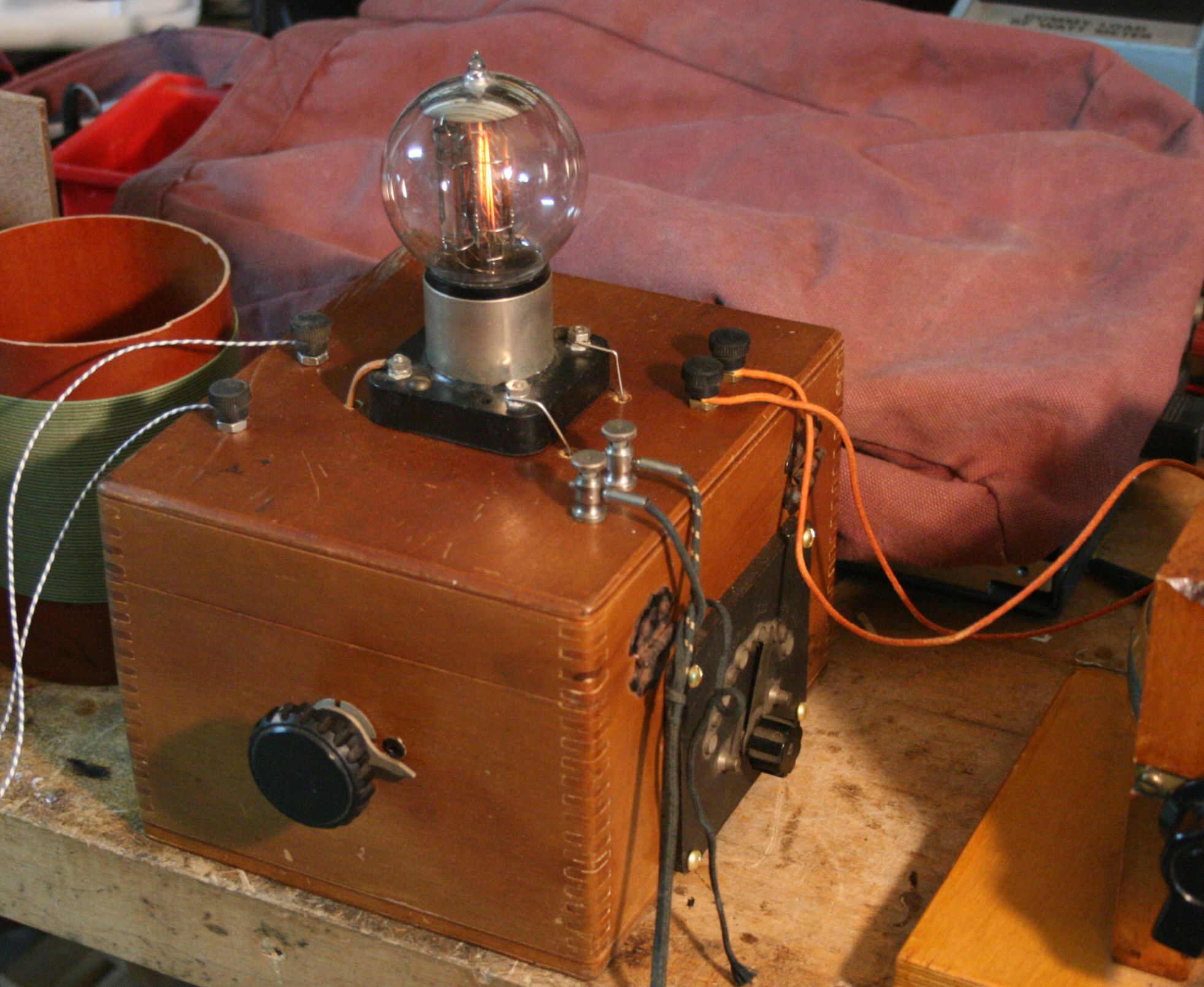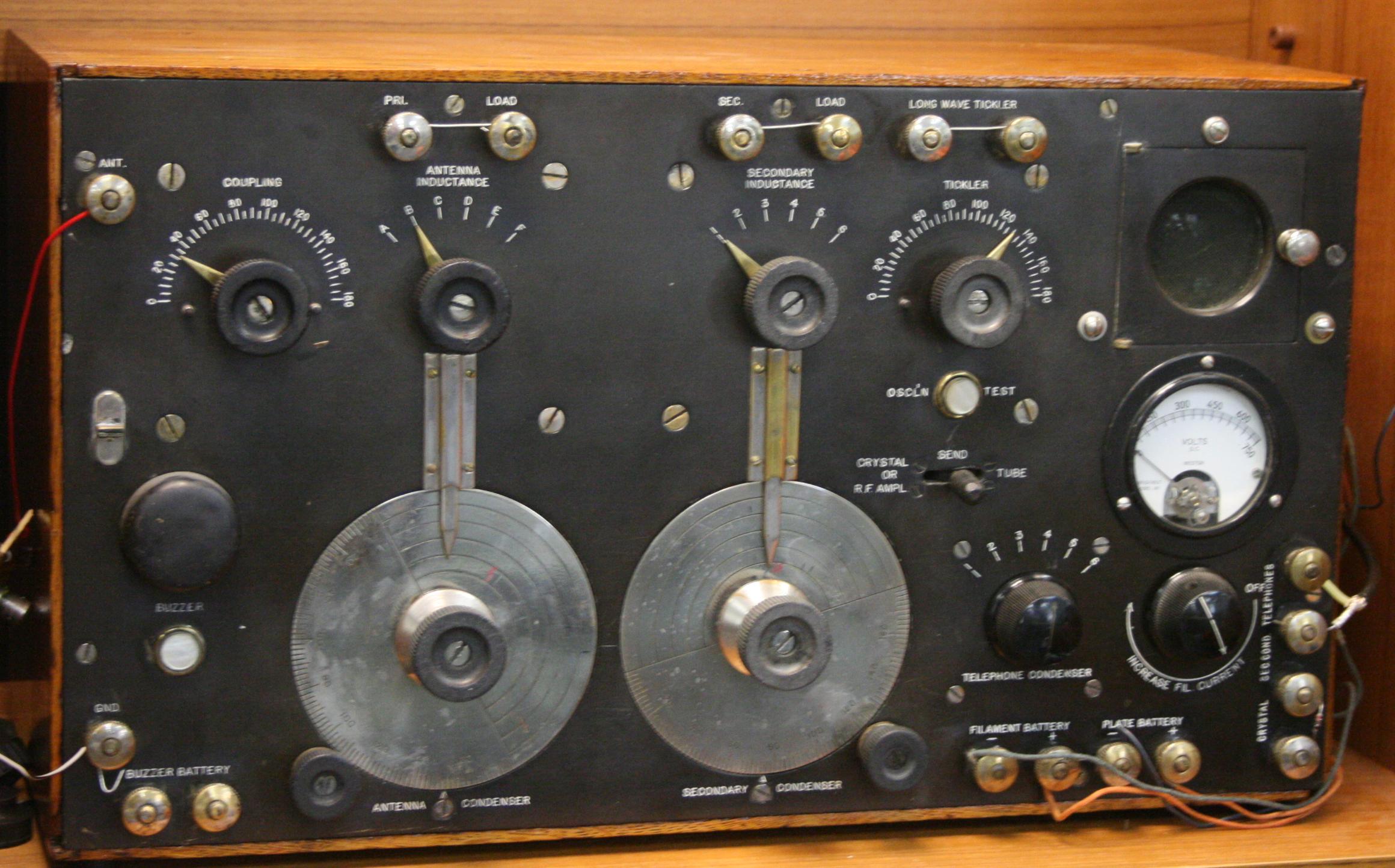On the night of 30 January 1914, Edwin Howard Armstrong, accompanied by Professor Morecroft from Columbia University, demonstrated his regenerative receiver to David Sarnoff and Roy Weagant of The American Marconi Company at the Belmar receiving station then under construction.
| |
|
| Marconi Operations Building and antenna masts from the Shark River side. | Op's building under construction in 1913-14. The Armstrong demo is believed to have occured in the construction shack visible here. The building still stands, but is in need of restoration. |
2014 marks the 101st anniversary of this historic event. The Marconi site morphed several time over the years, becoming the U.S. Army's secret radar laboratory in 1941, and is now the home of the InfoAge Science History Learning Center and the New Jersey Antique Radio Club’s Radio Technology Museum.
 |
OK, we don't know what the original regenerative receiver looked like when Armstrong made the initial discovery, but we're going to guess. |
| Armstrong's receiver was compared to the American Marconi Type 101, a sophisticated crystals set, and probably one of the best receivers then in use. | |
 |
The IP-501 was the U.S. Navy's first receiver with the vacuum tube inside the cabinet. This regenerative design was the work of Alan Hazeltine. We'll use this as a standin for the 101. |
From David Sarnoff's report to his superiors: Dear Sir: - February 2nd, 1914. On January 30th I met Mr.
Armstrong
,
Professor
Morecroft and Mr.
Wiegant,
with whom I proceeded to our high power station at
Belmar,
N.
J. to test Mr.
Armstrong's
receiving
system. Two aerials were erected,
one
about 1600 ft. long and the other the entire length of
the masts erected at Belmar. Signals were heard from
Clifden at about 4:00
p.m.
(New York time) and from this
time until we finished experimenting,
which was about 5:00 A.M/. (New York time ) January
31st, no appreciable variation of the intensity
of Clifden signals was noticeable ..... Armstrong's receiver was
compared with our standard 101 navy type tuner together
with the cerusite and carborundum detectors. Speaking relatively of
received signals means of course,
very
little since the human ear is not
to be depended up
on,
but an idea of
the difference may be obtained
when it is stated that signals from Clifden on Armstrong's
receiver could be read with ease with telephones on the table when signals on
our receiver were barely readable with the telephones on the
ears...... The Armstrong receiver
proved its greatest value when used in conjunction with
continuous waves. Signals from the Poulsen
Station at Frisco, which I understand is about 35 K.W'.
having
an approximate overall efficiency of 25% thus radiating from the
antenna about 9 K.W.
we
rereceived at Belmar at about
8:00 p.m.
(New
York time).
The
received signals from Frisco were about 100%
stronger than the loudest signals received from Clifden..... At about midnight ( New York
time ) I heard "HU" - Poulsen Station at Honolulu - trying
to work with the Poulsen Station at Frisco..... Signals received from
Honolulu were sufficiently strong to be read with the
telephones on the table..... In conclusion I would state
that the results obtained with Mr. Armstrong's
receiver are sufficiently convincing to
warrant our most careful investigation of his patents and circuits, etc., for I believe that his
device has tremendous advantages,
and unless there be other
systems of equal merits which
are
unknown to
me,
I
am of the opinion that he has the most remarkable receiving system in
existence.
Yours very truly, D. Sarnoff Chief Inspector Join us Feburary 8th or 9th to celebrate this historic event. |
|